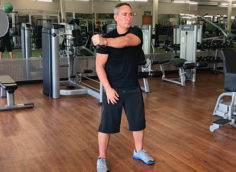You see it at every gym: quarter-squat lifting with heavy weight, or ass-to-grass movements but with a rounded back that looks like the Gateway Arch. Those who don't care to squat like a pro make excuses, "I have bad knees," "I'm not a powerlifter, and "I look better than you." Those who do care tend to spend hours rolling on objects like a cat.
The hips are designed to be mobile and powerful. Shouldn't we train them as such?
The Zercher squat has long been used as a test of manhood and shear strength. Besides the obvious difficulty of holding the weight in the crevices of the elbows – forcing the lifter to use significantly more arm strength, scapular stability, and thoracic mobility – the Zercher squat places the weight at a significantly lower position than the back squat and even the front squat. The load puts more stress on the hips, similar to belted squats, and allows the lifter to be pulled into more hip flexion.
Sumo-stance squats and deadlifts shift the emphasis to a much more hip and glute-dominant exercise than the conventional stance. The wide stance and flared feet, otherwise known as abduction and external rotation, causes an increased demand from the glute medius.
A bonus of this stance is that the weight lifted travels less distance than the conventional stance. The downside? Most people struggle with the mobility demands of the sumo stance and either butcher them or give up on them altogether. Not being able to perform an exercise should never be an acceptable excuse.
The sumo-stance Zercher squat is the Voltron of exercises. It's a Zercher squat performed with the wide sumo stance. When performed correctly, the lifter will reap the benefits of improved hip mobility and strength, which will translate into better movement across squats and deadlifts no matter what your preferred stance.

- Set the pins of the squat rack just above your hips.
- Start significantly lighter than your squat max. About 25% is a good start.
- Hook the weight with your elbows and keep your forearms pointed to the ceiling.
- Step out from the rack, set your wide stance with your feet flared out further than usual, inhale deeply, and brace your core.
- Keeping an upright posture and a near-vertical shin angle, lower yourself towards the ground. You may not reach full depth or even hit parallel the first few times, but stick with it, and the reward will be PRs, an increased love life, and a promotion at work.





